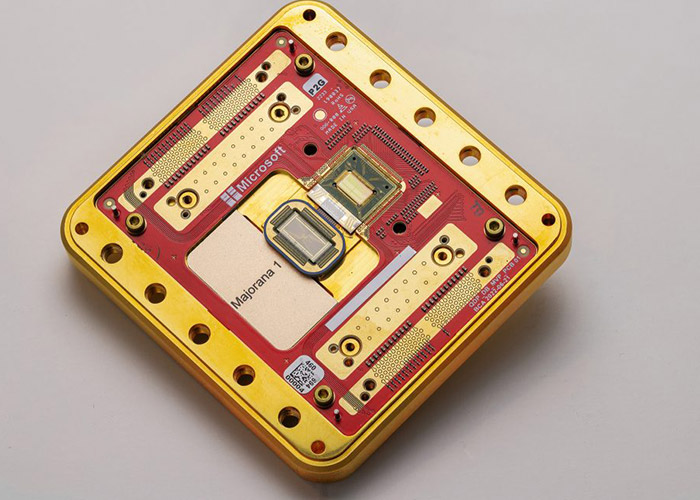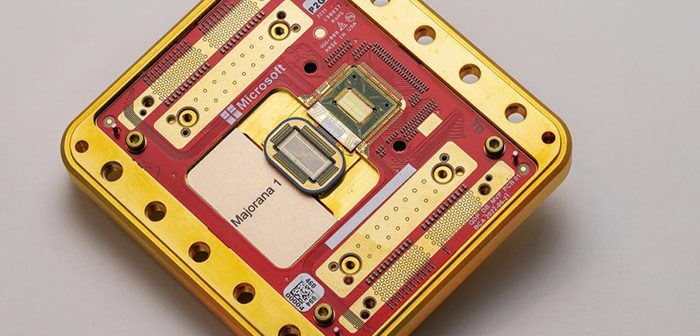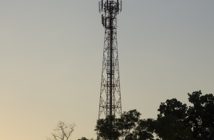
Microsoft has unveiled the Majorana 1, the world’s first quantum chip powered by a new Topological Core architecture that it expects will result in quantum computers capable of solving industrial-scale problems in years, not decades.
It leverages the world’s first topoconductor, a breakthrough type of material which can observe and control Majorana particles to produce more reliable and scalable qubits, which are the building blocks for quantum computers.
Microsoft said that in the same way that the invention of semiconductors made today’s smartphones, computers and electronics possible, topoconductors and the new type of chip they enable offer a path to developing quantum systems that can scale to a million qubits and are capable of tackling the most complex industrial and societal problems.
This new architecture used to develop the Majorana 1 processor offers a clear path to fit a million qubits on a single chip that can fit in the palm of one’s hand. Microsoft says it is a needed threshold for quantum computers to deliver transformative, real-world solutions – such as breaking down microplastics into harmless byproducts or inventing self-healing materials for construction, manufacturing or healthcare. All the world’s current computers operating together can’t do what a one-million-qubit quantum computer will be able to do.
The topoconductor, or topological superconductor, is a special category of material that can create an entirely new state of matter – not a solid, liquid or gas but a topological state. This is harnessed to produce a more stable qubit that is fast, small and can be digitally controlled, without the tradeoffs required by current alternatives.
A new paper published this week in Nature outlines how Microsoft researchers were able to create the topological qubit’s exotic quantum properties and also accurately measure them, an essential step for practical computing.
The breakthrough required developing an entirely new materials stack made of indium arsenide and aluminum, much of which Microsoft designed and fabricated atom by atom. The goal was to coax new quantum particles called Majoranas into existence and take advantage of their unique properties to reach the next horizon of quantum computing.
The world’s first Topological Core powering the Majorana 1 is reliable by design, incorporating error resistance at the hardware level, making it more stable.
Commercially important applications will also require trillions of operations on a million qubits, which would be prohibitive with current approaches that rely on fine-tuned analog control of each qubit. The Microsoft team’s new measurement approach enables qubits to be controlled digitally, redefining and vastly simplifying how quantum computing works.
This progress validates Microsoft’s choice years ago to pursue a topological qubit design – a high risk, high reward scientific and engineering challenge that is now paying off. Today, the company has placed eight topological qubits on a chip designed to scale to one million.
The Nature paper marks peer-reviewed confirmation that Microsoft has not only been able to create Majorana particles, which help protect quantum information from random disturbance but can also reliably measure that information from them using microwaves.
Majoranas hide quantum information, making it more robust, but also harder to measure. The Microsoft team’s new measurement approach is so precise it can detect the difference between one billion and one billion and one electrons in a superconducting wire – which tells the computer what state the qubit is in and forms the basis for quantum computation.
The measurements can be turned on and off with voltage pulses, like flicking a light switch, rather than fine-tuning dials for each individual qubit. This simpler measurement approach that enables digital control simplifies the quantum computing process and the physical requirements to build a scalable machine.
Microsoft’s topological qubit also has an advantage over other qubits because of its size. Even for something that tiny, there’s a Goldilocks zone, where a too-small qubit is hard to run control lines to, but a too-big qubit requires a huge machine. Adding the individualised control technology for those types of qubits would require building an impractical computer the size of an airplane hangar or football field.
Majorana 1, Microsoft’s quantum chip that contains both qubits as well as surrounding control electronics, can be held in the palm of one’s hand and fits neatly into a quantum computer that can be easily deployed inside Azure datacenters.





